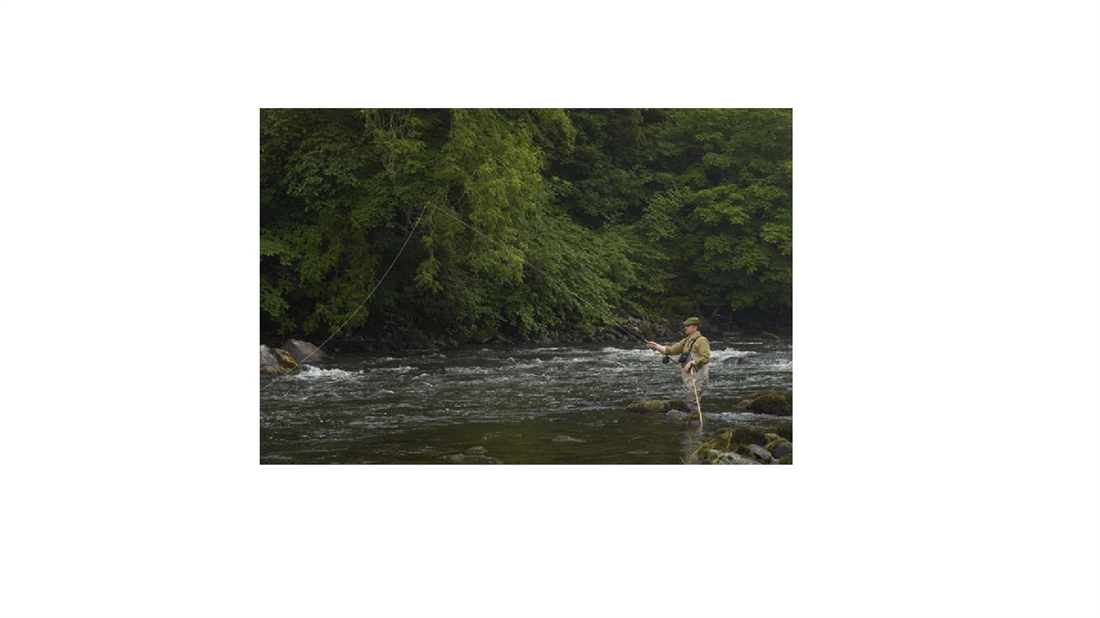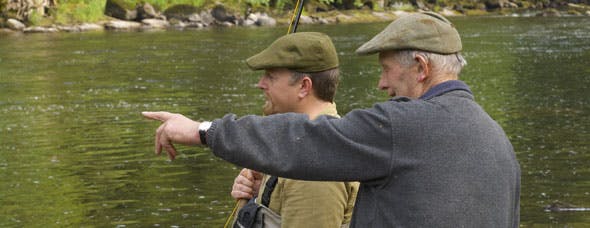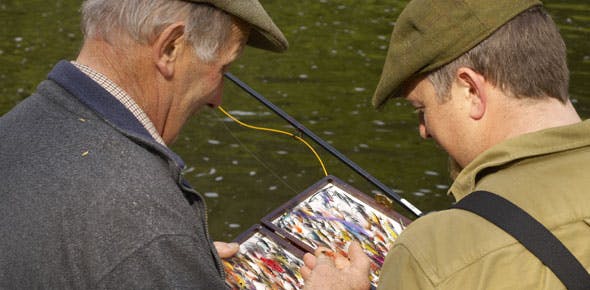HOW TO FISH A TYPICAL SALMON RIVER OR BEAT

Salmon-fishing can be a complex sport. Much debate and theory lies behind the capture of these magnificent fish. For those who have significant numbers of salmon to their name these theories are based on considerable experience, observation and knowledge gathered over many years. But for those yet to catch their first salmon these sometimes conflicting and often personal views can be puzzling. In my early years I was put off and fearful of this expectation of knowledge.
The illusion that salmon-fishing is elitist and for those with considerable wealth still prevails. Yes, there are beats and rivers that demand high prices, but a significant majority are well within the reach of those with shallower pockets. Salmon-fishing can cost little more than a day’s trout fishing. Be on the river in the right place and at the right time, follow a little basic advice and your chances of catching a salmon are as good as the next man’s – or woman’s. First, I would strongly recommend any beginner to seek casting tuition and tackle advice from a qualified game-fishing instructor before even thinking about spending hard-earned cash on a day’s salmon-fishing.
At £150 a day it will save you significantly more in the long term. Once you’ve had a lesson, you will have the ability to cast a fly over any salmon pool. Only then
will you realise the attraction of fishing for these magnificent creatures. Here is a pace-by-pace guide to fishing a salmon pool – enough to get you started in the world of salmon-fishing.
Before you start fishing…
If you have a gillie, heed his advice. He should (if he is a good gillie), point out any potential taking spots in the prevailing height of water. He will also recommend the most suitable line, fly size and colour.

Line and fly choice
As a general rule, fish a big fly (from size 4 up to a 21/2-inch tube-fly) on some form of sinking line in cold water (say 45 deg F and below) in the spring and late autumn; and smaller flies (size 8-14) on a sink-tip or floating line and polyleader in the warmer months. In this case, summer low-water conditions have dictated the use of the floater. You can vary the depth at which a fly fishes on a floating line by adding a shop-bought polyleader. (These come in various densities; floating through to extra fast-sinking). They will also improve fly presentation.
Any offers?
If a salmon comes and looks at your fly but doesn’t take it properly, you may feel a slight draw on the line or in some cases you may even see the fish. If this happens, try an identical cast as the fish may have accidentally missed your fly or may take it the second or third time.
If this doesn’t work there are a number of things to try. These include fishing your fly faster (this may be as simple as adding a retrieve), changing the size and/or pattern of your fly or altering the angle of your cast.
The take
If and when a salmon takes your fly, don’t panic! In fact you should do nothing initially – don’t strike or lift your rod up immediately. When a fish takes the fly properly it will rise in the water, take the fly in its mouth and turn back down from whence it came, hooking itself in the process. Only when the salmon has taken a yard or so of line should you raise the rod to set the hook. There are two ways of allowing the fish to take line. You can fish with your line directly to the reel with no slack but with the drag set lightly, or you can fish with a loop of loose line between your upper hand and the reel, trapped between forefinger and rod butt.
Safety
Even when you’re not wading deeply a wading stick will help you negotiate rocky shallows. Make sure it has a rubber button on the end to avoid noise. In low water stealth is important. Falling over and clattering about will greatly reduce your chances of success.
Before you leave

Don’t forget to tip your gillie: £10-15/angler/day is about the normal. Please note that the photographs for this feature were based on a pool on the Lazonby Estates’ water of the River Eden in Cumbria. For the purposes of this feature we have reversed all the pictures so that the river runs from left to right. Our thanks to Lazonby Estates and gillie Edwin Tailford for their kind hospitality. For fishing contact Edwin on 01228 560 122.





